LLM-instruction-tuning
instruction-tuning相关论文
Instruction-induction
Instruction Induction: From Few Examples to Natural Language Task Descriptions
Tel Aviv University和Meta,代码。首次提出从几个demonstrations使用LLM自动生成task instruction的任务。
Large language models are able to perform a task by conditioning on a few input-output demonstrations – a paradigm known as in-context learning. We show that language models can explicitly infer an underlying task from a few demonstrations by prompting them to generate a natural language instruction that fits the examples. To explore this ability, we introduce the instruction induction challenge, compile a dataset consisting of 24 tasks, and define a novel evaluation metric based on executing the generated instruction. We discover that, to a large extent, the ability to generate instructions does indeed emerge when using a model that is both large enough and aligned to follow instructions; InstructGPT achieves 65.7% of human performance in our execution-based metric, while the original GPT-3 model reaches only 9.8% of human performance. This surprising result suggests that instruction induction might be a viable learning paradigm in and of itself, where instead of fitting a set of latent continuous parameters to the data, one searches for the best description in the natural language hypothesis space.
之前的工作已经证明通过给定几个demonstrations,LLM能够模拟demonstrations对给定的query text产生类似的输出(即In-context learning)。作者进一步提出让LLM直接描述demonstrations表达的task是什么。
作者提出的进行Instruction Induction的prompt:

作者创建了一个新的包括24个task的数据集,下面是示例:
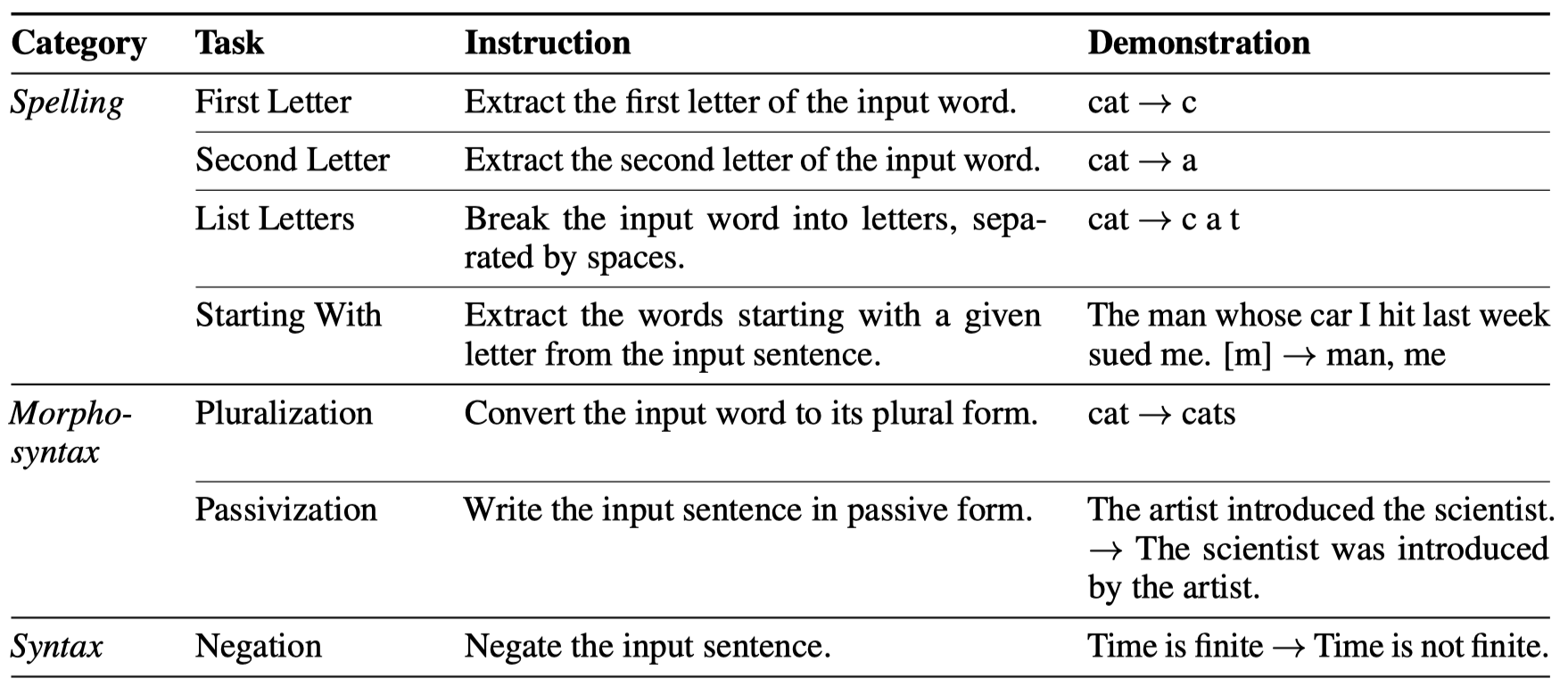
为了评估LLM进行指令归纳的效果,作者提出使用两个指标:
- BERTScores: 评估LLM生成的指令和人工设计的指令
- execution accuracy: 作者新提出的指标,意思是让LLM zero-shot的执行自身生成的task instruction,计算执行的效果。
在实验部分,是使用5个demonstrations进行归纳。作者发现InstructGPT才表现出了较好的instruction-induction能力,没有经过instruction-tuning的GPT-3没有表现出这种能力:
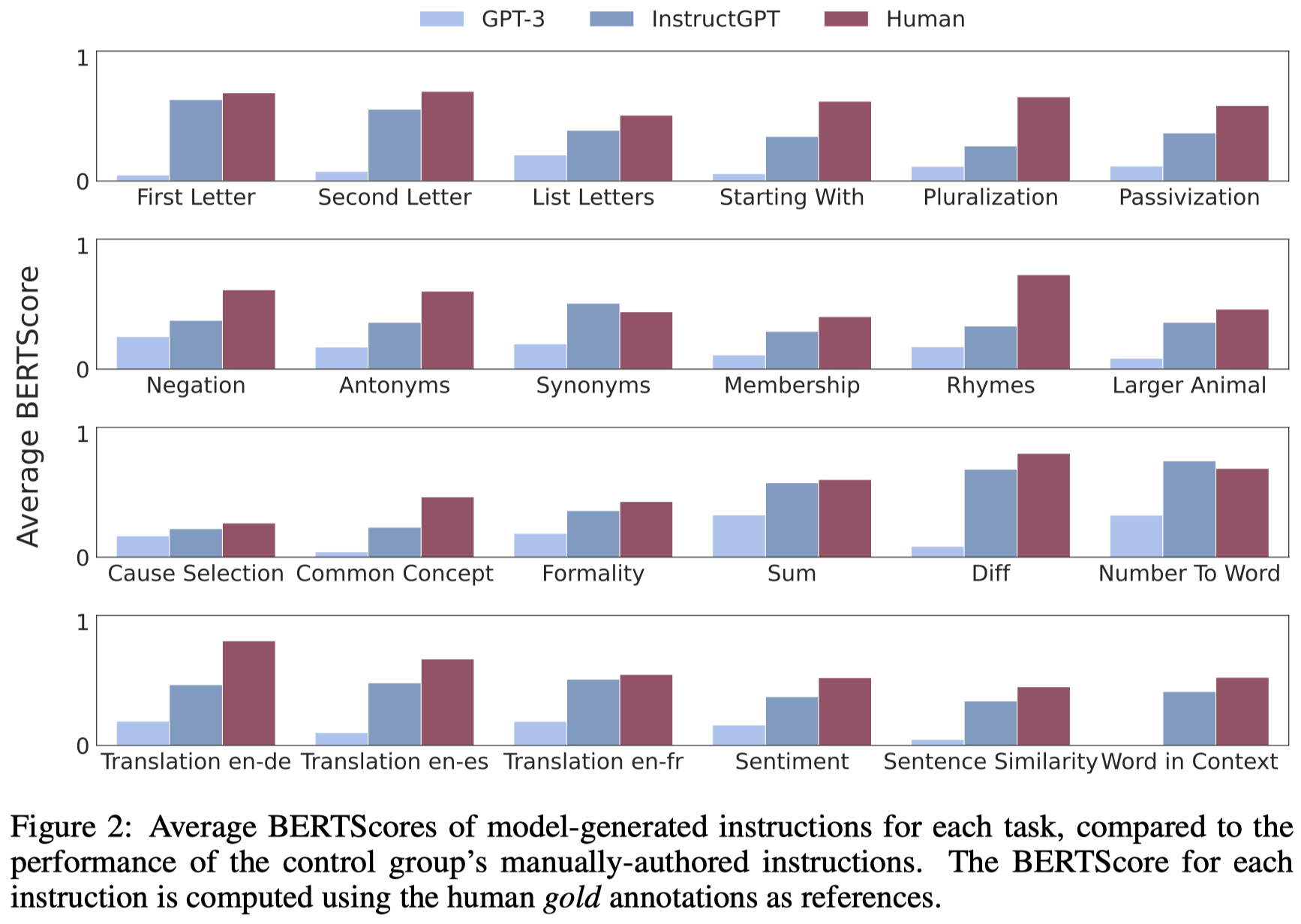
Self-Instruct
ACL 2023,华盛顿大学,代码。
[个人详细博客]Large “instruction-tuned” language models (i.e., finetuned to respond to instructions) have demonstrated a remarkable ability to generalize zero-shot to new tasks. Nevertheless, they depend heavily on human-written instruction data that is often limited in quantity, diversity, and creativity, therefore hindering the generality of the tuned model. We introduce SELF-INSTRUCT, a framework for improving the instruction-following capabilities of pretrained language models by bootstrapping off their own generations. Our pipeline generates instructions, input, and output samples from a language model, then filters invalid or similar ones before using them to finetune the original model. Applying our method to the vanilla GPT3, we demonstrate a 33% absolute improvement over the original model on SUPER-NATURALINSTRUCTIONS, on par with the performance of InstructGPT 001, which was trained with private user data and human annotations. For further evaluation, we curate a set of expert-written instructions for novel tasks, and show through human evaluation that tuning GPT3 with SELF-INSTRUCT outperforms using existing public instruction datasets by a large margin, leaving only a 5% absolute gap behind InstructGPT 001 . SELF-INSTRUCT provides an almost annotation-free method for aligning pretrained language models with instructions, and we release our large synthetic dataset to facilitate future studies on instruction tuning.
人工生成instructions一方面代价很大,另一方面人工生成的instructions难以保证quantity, diversity, and creativity。
作者提出使用LLM从已有的task instruction出发,自动生成新的task instruction和对应的input-output,然后过滤掉不符合规则的新task instructions,再加入到已有的task instructions集合中。作者在这个自动构造的instruction data上fine-tuning GPT3,发现效果提升了33%,非常接近InstructGPT001的效果。
作者提出的方法:

首先,作者拥有一个task pool,包括175 tasks (1 instruction and 1 instance for each task)。这175个初始的task instructions都是由本文作者自己创建的。
然后,作者从task pool中随机抽取8个task instructions(6 are from the human-written tasks, and 2 are from the model-generated tasks)。下面是产生新task instruction的prompt:
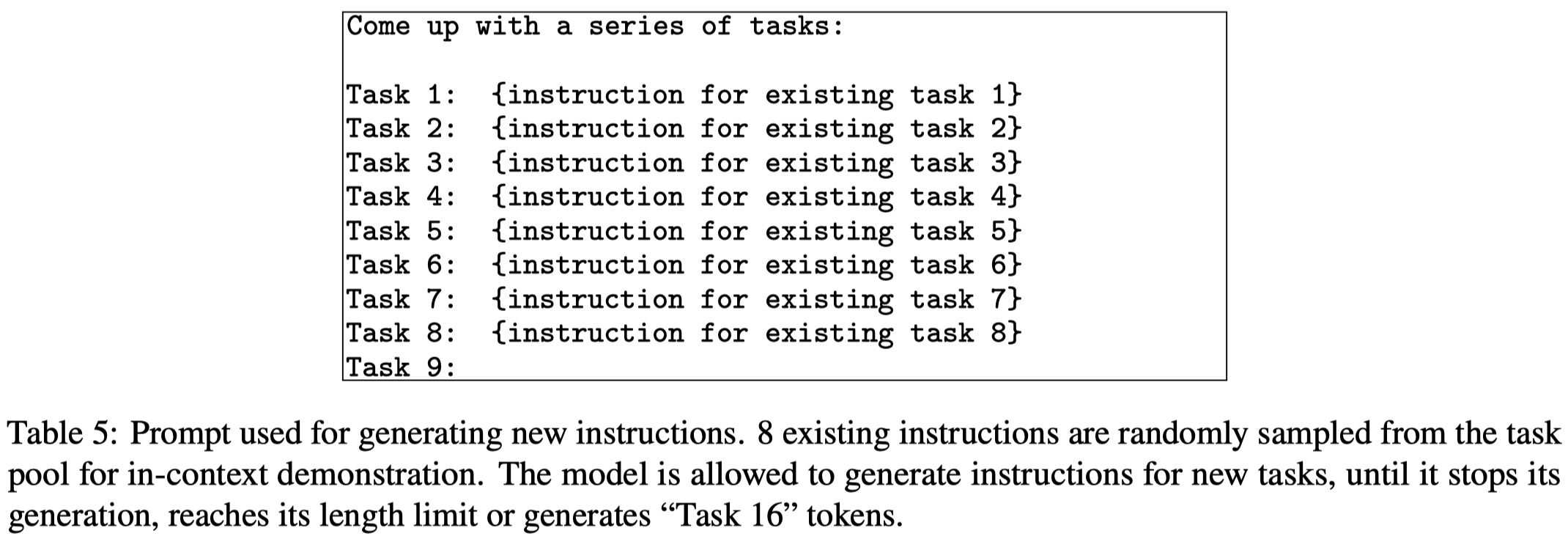
之后,作者使用LLM判断新产生的instruction是否是一个classification task(using 12 classification instructions and 19 non-classification instructions):
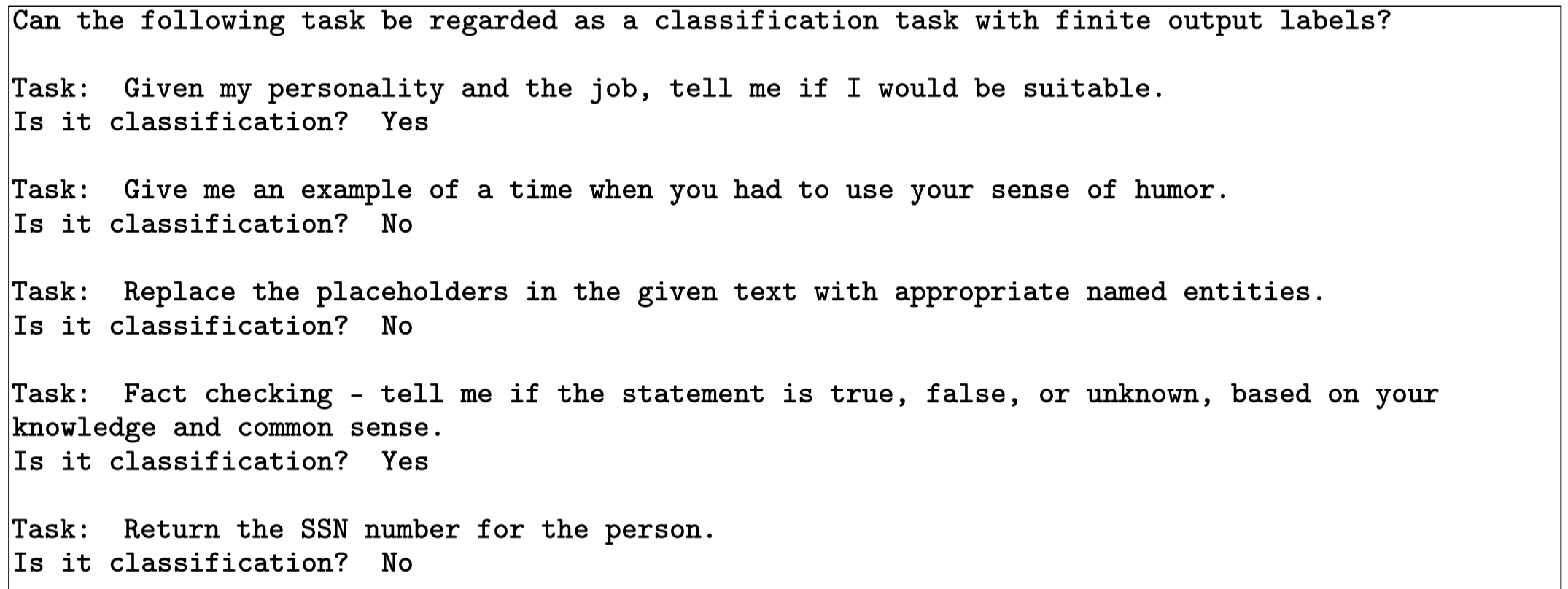

随后,对于新产生的task instruction,用LLM生成新的对应的instance。对于生成任务,作者先生成input,再生成output,作者称为Input-first Approach:

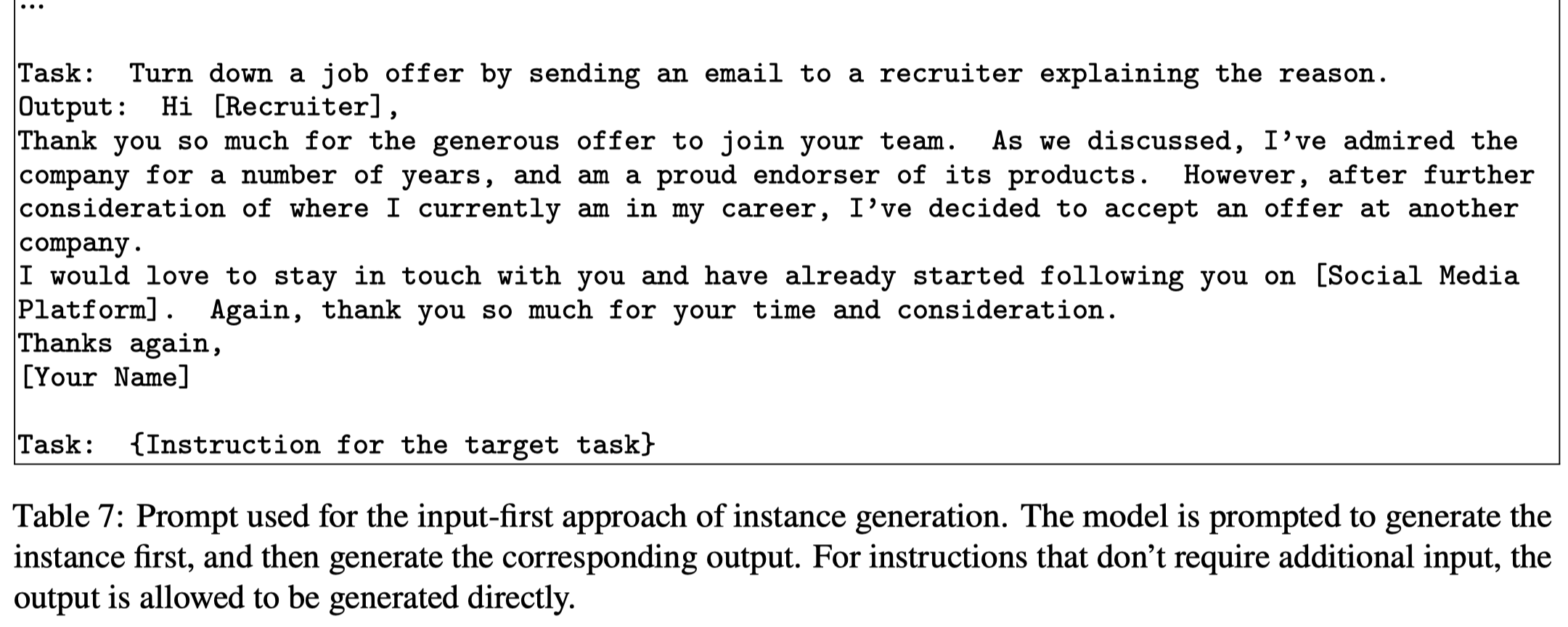
对于分类任务,作者发现如果是先生成input,LLM总是会倾向于生成某一个label的输入。因此作者使用LLM先生成output label,再让LLM生成input,作者称为Output-first Approach:


对于LLM生成的task instruction、input和output,需要通过一些规则过滤,比如:
- 只有当和已有的task instruction相似度全部比较低(\(\mbox{ROUGE-L}< 0.7\))的时候,一个新task instruction会被添加到task pool里
- We also exclude instructions that contain some specific keywords (e.g., image, picture, graph) that usually can not be processed by LMs.
- When generating new instances for each instruction, we filter out instances that are exactly the same or those with the same input but different outputs.
- Invalid generations are identified and filtered out based on heuristics (e.g., instruction is too long or too short, instance output is a repetition of the input).
作者从原始的175个task出发,最后构造了5万多的task,并且差异性也比较大:
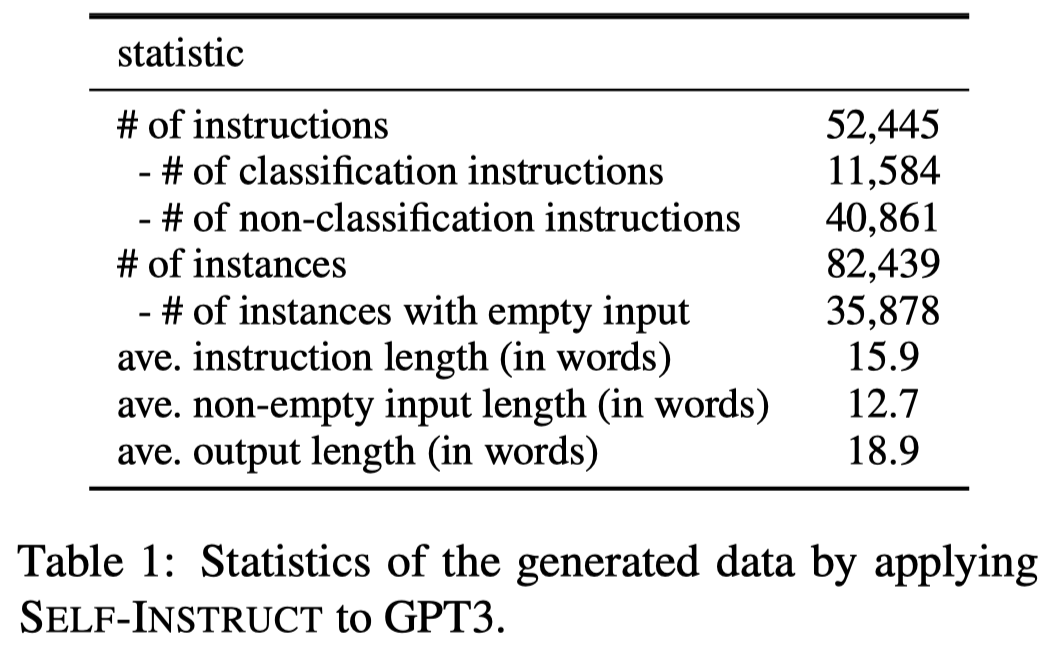
在SuperNI数据集上的实验结果:
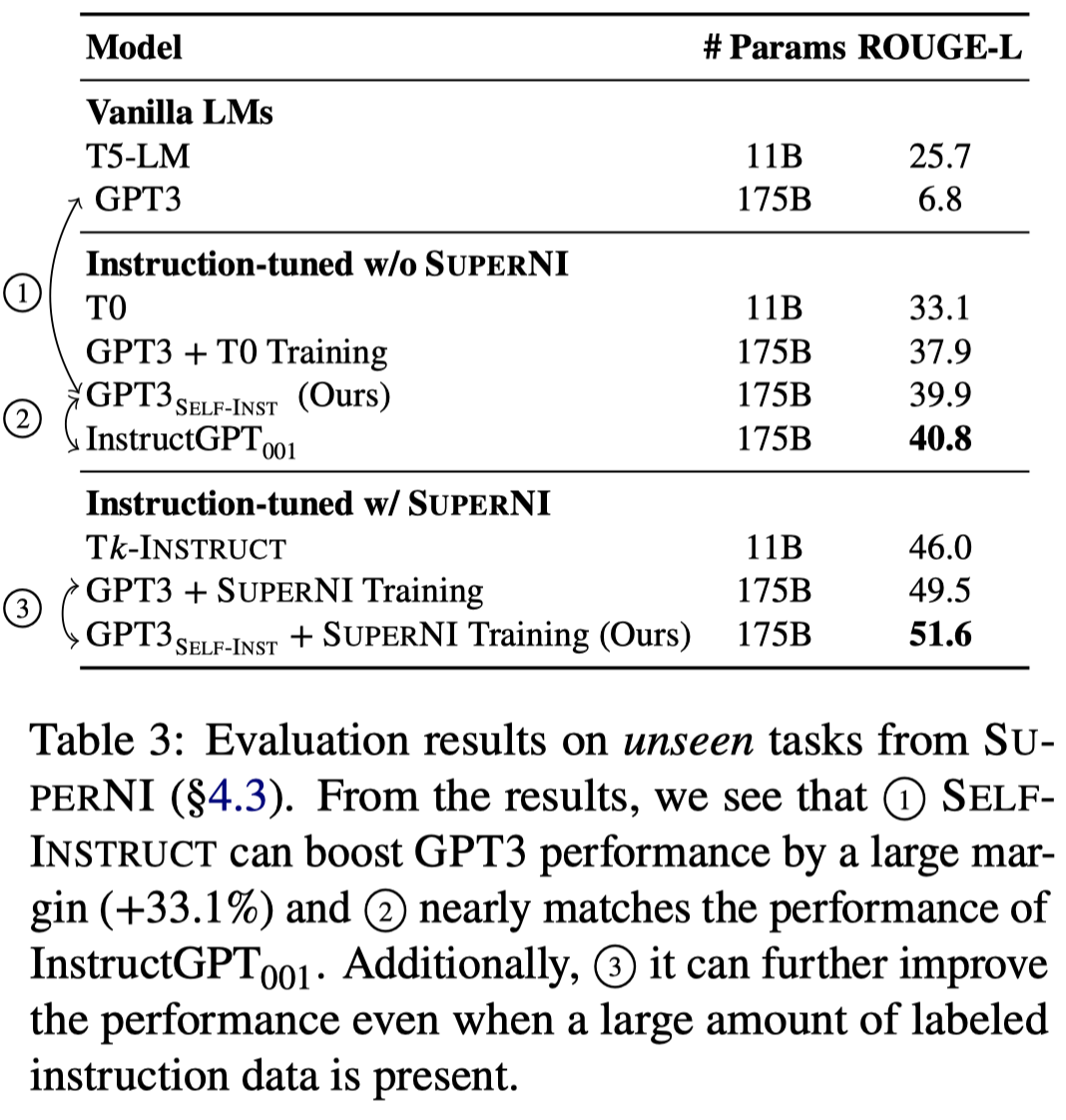
SuperNI数据集大多是已有的NLP任务,为了进一步评估模型在实际使用场景下的价值,作者人工创建了一个包括252 task的新数据集。